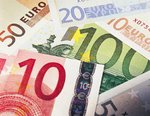Big downturn could arise in the near future on equity markets, namely the overestimated situation on present markets is unambiguously unsustainable – Alan Greenspan warned investors at a conference in Madrid. Due to this statement after the initially rising the most notable bourse indices of the World fell towards to the red range. Sanghai and the Sentsen Stock Exchange had opened with historic-peak, latter it closed day with minus 2 percentage.
DangerThe former chairman of the FED not by chance warned investors about chinese markets: by this time the CSI 300 index has been strengthening with 95,88 percantage, thus it becomes the best performing indice by far the best. There is a speciel interest part of the story. It seems, Greenspan outweights the chairman of the China’s Central Bank, and the reachest people, Li Ka Sing. Although the huge expactations about the correction, now it seems – albeit with lurching - the propensity to purchase is buoyant in the asian bourses.The shanghai composit Index could have posted the second biggest rising of the World with its 130,4 percantage, in this year it has been increased by 53 percantage by this time, meanwhile in the last year the venezuela’s indice fell back to the second position, and now became file closer. The expansion couples with certainly rising if the perils.
Double JeopardyFew days before the Securities and Exchange Commission called on the brokers firm of countries: according to the statement the risk of the chinese capital market’s instruments has doubled, this institution liables for the proper informing for the sake of investors.
After the record value 17 200 billion juan came together on the broker account owned by general public the Central Bank has been starting their warning mission for the problem. According to the experts the seething equity market could do with central intervention int he huge country.
Meanwhile Greenspan’s statement caused a selling streak over Chine’s and region’s bourse, spurts the born of its weakness, in Russian numerous factors contributed to the evolving of the correction measurement.
After Russia had refused the extradition of the ex KGB-agent charged with killing in connection with london-spy, thus the political tension were rising further between EU and Russia. The Russian capital market has worsened, because of the decline of the energy sector profits due to the downturn int he raw materials market. It could be a hard hit for the russian bourses.



